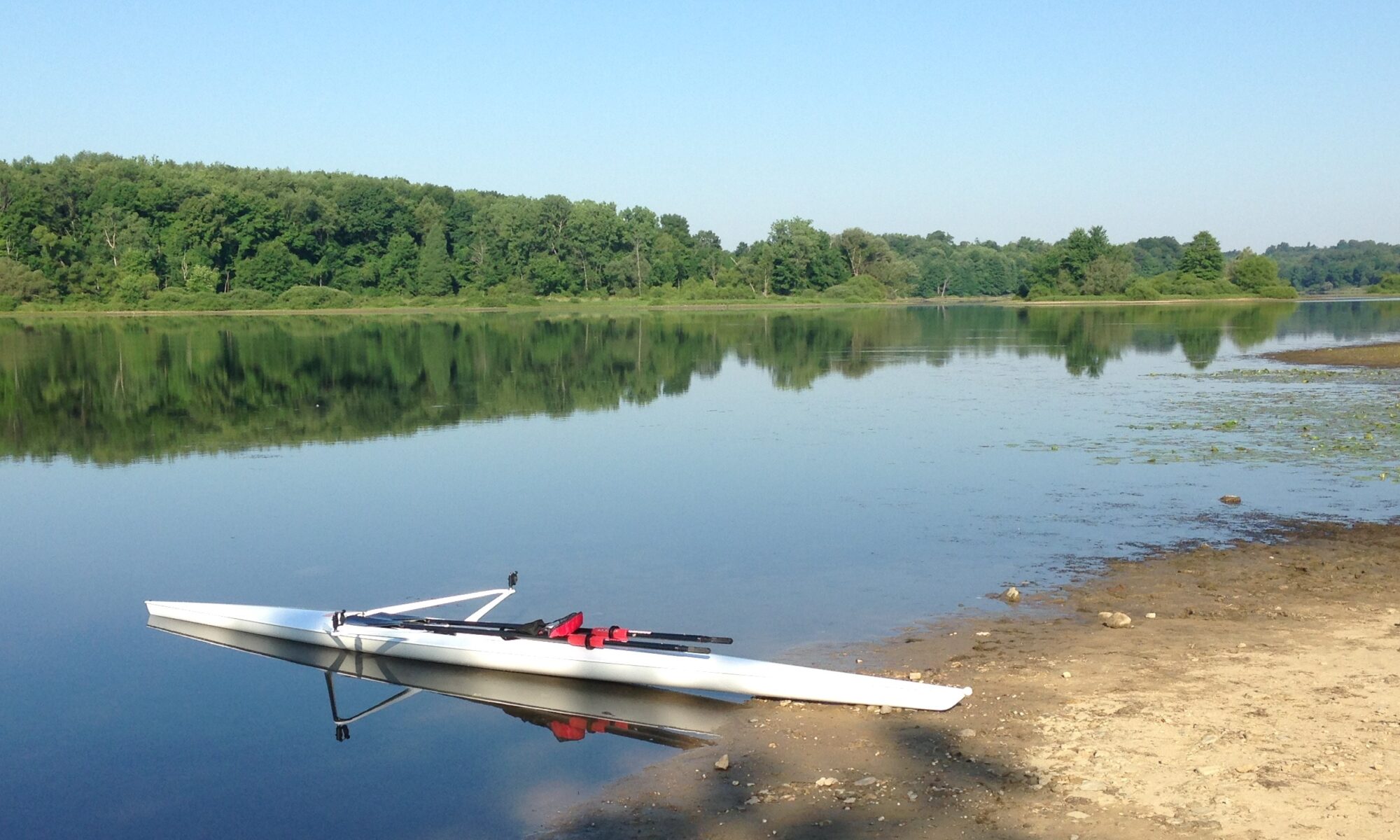by Paul Lewis
What follows is the substance of a couple of e-mails from Paul Lewis — long time open water rower and member of Open Water Rowing Center (OWRC) in Sausalito, CA. Paul and his wife Pam managed OWRC during its transition to a member-owned club. He wrote the e-mails in response to some questions I’d raised about how people like Stefan Benton and Eileen Hansen appear to be able to row comfortably in water that I find very difficult. Stefan and Eileen won the 2002 Catalina Crossing in a Maas Double in conditions that involved 3 foot swells covered with one foot of wind-blown chop.
There were three techniques that Paul discussed:
- Change your ratio
- Keep continuous outward pressure on the oars
- Plant the heels during the recovery
Change your ratio
Here is a hint about open water racing. One reason that Stefan (Benton) and other highly experienced open water rowers do well is that they move in and out of the technique for rough water.
During lane racing, you can work on the ratio of time spent on the drive to time spent on the recovery. There is an idealized notion that the ratio of recovery / drive should be approximately 2. In rough water one goes to a ratio of one to one and in extreme conditions to arms only. Of course, too much reliance on arms only will quickly fatigue your forearms.
The key is to employ the legs. For example, imagine an accordion. And imagine that you’re rowing comfortably. Your sequence might be something like: “Nice smooth rowing — 2:1 ratio … Oh, Oh, here comes a tidal rip … quarter slide quarter slide etc half slide quarter slide …” When you encounter the really rough conditions, punch through it by really letting legs power you. You will quickly come out the other end and return to nice ratio rowing.
In open water rowing we also quickly increase the stroke rating to very fast. It is not uncommon to stay on the square because you are moving too fast at quarter slide or even half slide. Remember the concept: even within a choppy water zone, one can attain a rhythm.
Finally, we do not draw ourselves up the slide during the recovery. The shell passes beneath us in a forward motion. Is this not why ratio is so critical so that the shell can run?
Keep continuous outward pressure on the oars
Another key to rowing in rough water is continuous outward pressure by the thumbs against the handles will allow for a stable platform in relation to the boat. If you try to compensate by breaking the plane of the hands in relationship to the oarlocks, you will tilt over from one side to the next. Instead, fight for the stable and level position within the boat. If you do tilt over because of a wave push, your level hand height and outward pressure against the oarlock will keep you “centered.” Another way to visualize this is to think of your thumb pressure as keeping your shoulders centered in the boat. If you allow your shoulders to roll with the waves, you will make the entire boat loose and floppy.
Emphasis: stay within the boat. The secret is to stay balanced with hands on an even plane. The shell can be bounced all over the place but if one stays focused on outward thumb pressure, you can remain stable with regard to the shell. Who cares what is happening outside in the water. A plane passing through turbulence does not flap its wings. They stay on the same level plane to the aircraft to which they are attached.
Plant the heels during the recovery
Another clue is to plant the heels during the recovery. Let the shell run beneath you with the heels in the cup. I was always taught previously to draw the shell beneath me by placing pressure of the top of my foot against the straps. If you keep pressure of the heel into the cup AND have the ball of the foot pressed against the foot stretcher and subtly allow the shell to run beneath, you are not only more stable, you are ready for the drive because the ball of your foot is flat against the top of the foot rest. Alternatively, by drawing the boat beneath you by using upward pressure of the top of the foot, when you initiate the drive, you drive the ball of your foot into the foot stretcher by first making a conscious hit with the foot. You are emphasizing a force directed sternward rather than doing everything to enhance forward motion to bow.
I do not want to insult you. Stating theory and ideals is one thing, but they can quickly get “drenched” in crazy water. What helps is to know what the ideal is and then work towards it.

